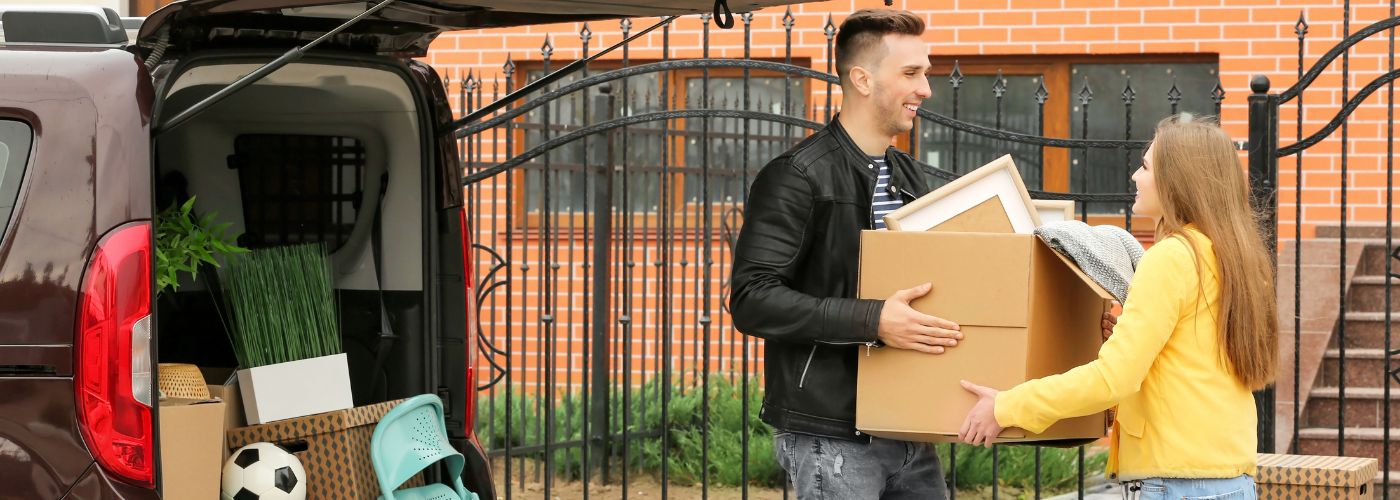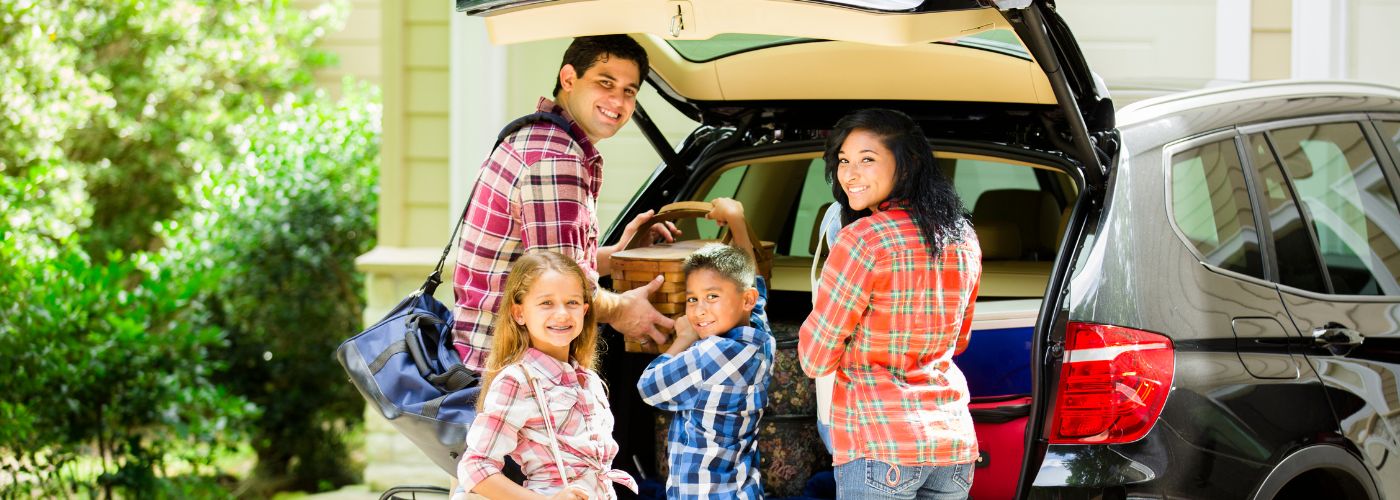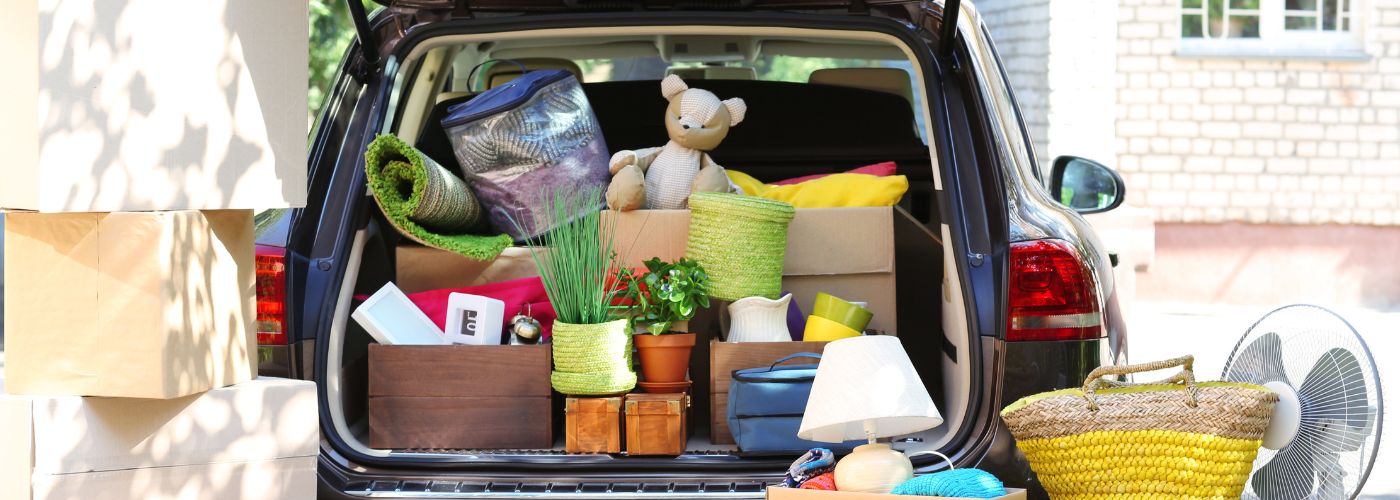Moving day can be a stressful and overwhelming experience, especially when it comes to packing up your car. Whether you’re relocating across the country or just down the street, ensuring that your belongings are safely packed and transported is crucial. Properly packing your car not only prevents damage to your items but also ensures that you have enough space for all of your essentials. In this blog, we’ll provide you with tips and tricks on how to efficiently pack your car on moving day.
What Is The Most Efficient Way To Pack A Car?

The first step in efficiently packing your car is to declutter your luggage. Only bring what you need for your trip and leave behind items that are unnecessary.
Next, choose the right size bags or suitcases for your belongings and make sure they’re sturdy enough to withstand the ride. Consider using compression bags that will save space by reducing bulkiness. When packing larger items such as camping gear or sports equipment, it’s best to place them at the bottom of the trunk nearest to where they’ll be used.
The next step in packing your car efficiently is to organize your things. If you’re driving with a large family or group of friends, plan your packing ahead of time. This will make it easier to find specific things and reduce the time spent digging through bags and suitcases.
Lastly, review your vehicle before hitting the road. This will help you find any forgotten items, missing pieces, or unsecured items that may end up in unexpected places. Make sure to always keep a spare tire and emergency tools in your car at all times.
How To Pack Your Car For Moving Cross Country

If you’re moving cross country, packing your car can seem daunting. It’s important to make sure everything you need fits in your vehicle without causing any damage to either the items or the car. Here are some tips for packing your car for a move:
1. Make a list of all the essential items you’ll need during the trip.
2. Pack heavy items first and place them at the bottom of your trunk or backseat.
3. Use soft items like blankets and pillows as padding between delicate items.
4. Secure loose objects with bungee cords or rope to prevent them from shifting during transit.
5. Keep fragile belongings in waterproof containers to protect them from rain, snow, or spills.
6. Don’t forget to put aside snacks and drinks for yourself along with toys and games for children if traveling with family members.
7. Don’t forget to clean out your car. This will clear up any space that’s taken from clutter.
8. Tie down loose items on the roof of the car with tie-down straps.
9. Make sure your trunk is properly closed before you leave for your trip.
10. If you’re transporting tools, make sure they are secured; this will reduce the risk of injury in an accident.
How To Pack A Computer Monitor For Moving
The first step to packing a computer monitor is to gather all necessary packing materials, such as bubble wrap, packing tape, and an appropriately sized box. It’s important to ensure that the box is sturdy enough to support the weight of the monitor without collapsing.
Before packing your monitor, make sure to clean it thoroughly with a microfiber cloth and disconnect any cables or cords. You may also want to cover the screen with a layer of bubble wrap or foam before wrapping the entire monitor in multiple layers of bubble wrap.
Secure these layers with packing tape and place the wrapped monitor inside the cardboard box.
When placing your packed monitor into a moving truck or car, be sure to position it upright and avoid placing heavy items on top of it. If need be, secure the box with straps, ties or a seatbelt so that there’s minimal movement during transportation.
It’s recommended to backup any important files on your computer before moving. This ensures that your files are recoverable in the event of the computer getting damaged.
However, with these moving tips you won’t have to worry about that!
How Far In Advance Should You Start Packing For A Move?
Deciding how far in advance you should start packing can help alleviate some of the stress related to local moving. It is recommended that you begin the process at least 6-8 weeks before your move date. However, if you have a large home or lots of possessions, you may want to start even earlier.
Starting early gives you ample time to sort through your belongings and determine what items are necessary to bring with you. You can sell or donate unwanted items and reduce the amount of things that need to be packed.
Additionally, starting early allows for more time to properly pack fragile items like glassware and electronics, reducing the risk of damage during transport. Taking on small tasks each day will make the process feel less overwhelming and ensure everything is packed up in plenty of time for moving day.


